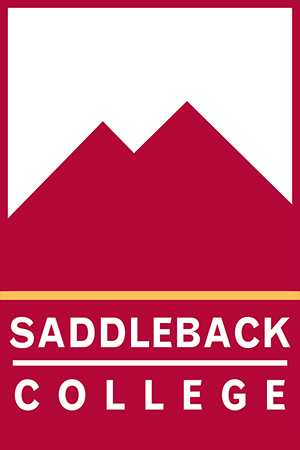The young and talented musicians of Pacific Symphony Youth Wind Ensemble (PSYWE), grades 8-12, conclude their season with a heavenly array of moving and arresting music.
The program, “Heaven and Earth,” features works that are both naturally and divinely inspired—from the “lightning in a bottle” of John Mackey’s 2015 “Lightning Field,” to the natural sounds of rain in Whitacre’s “Cloudburst,” to Grainger’s impressions of a typical day in Australia in “Colonial Song,” and the spiritual underpinnings of Maslanka’s “Give Us This Day.”
Also, for the first time in PSYWE history, the ensemble performs a new composition by one of its own members, trumpeter Kai Quizon, who wrote “Impulse” over his summer break after working with Symphony composer-in-residence Narong Prangcharoen. These talented brass, woodwind and percussion musicians come together to perform this moving selection of music on Sunday, May 22, at 1 p.m., in the Renée and Henry Segerstrom Concert Hall.
Thanks to the generosity of sponsors, this concert is free to attend. To reserve a general admission ticket, call the Symphony’s box office at (714) 755-5799 or visit www.PacificSymphony.org.
Regarded as one of the few premier youth wind symphonies in the nation, PSYWE is led by renowned band educator Gregory X. Whitmore. “This program came to fruition as a result of my thoughts about the term ‘inspiration,’” he says. “What inspires us in our lives? Where do we turn in times of strife and struggle? What sustains us? The music of ‘Heaven and Earth’ draws its inspiration in the multitude of ways in which we, as a species, personally draw upon nature and faith.
“Everyone who loves great music should attend this concert!” he continues. “This concert speaks to an aspect of our common human experience and certainly music plays a major role in that sustenance.”
The concert opens with living composer John Mackey’s rousing and inventive “Lightning Field.” The piece was inspired by a massive work of art by conceptual artist Walter de Maria, who placed steel rods over a large expanse of desert to attract lightning strikes and create powerful man-made electrical storms.
It conveys the ancient impulse to summon nature’s power; one can feel a sense of barely contained energy rippling throughout. Mackey’s composition captures this grandeur through bold instrumentation and broad musical gesture. He depicts the energy of thunderstorms through rhythmic percussion, and uses handheld percussion instruments to simulate the sound of thunder.
“The first two pieces that open the concert by Mackey and Whitacre both speak to our fascination with and inspiration from nature—interestingly, both pieces are influenced by rain and thunder,” notes Whitmore.
“Cloudburst” is one of Whitacre’s most famous compositions, containing a powerful fusion of the poet Octavio Paz’s words and vivid musical imagery. He wrote the original piece in 1992 (at age 22) for an eight-part choir with piano and percussion accompaniment. The text was adapted from the poem “El Cántaro Roto” (The Broken Water Jug).
The first section is notable for its dissonant tone clusters, while in the section titled “The Cloudburst” features a clap of thunder sounding like a storm that gradually builds then fades. This version was nominated for a Grammy Award for best choral performance in 2007. The concert band version was commissioned by the Indiana All-State Band in 2001.
“I wanted to write something…that would really knock the audience out,” says Whitacre. “Octavio Paz had recently given me an exquisite book of poems, and around the same time, I witnessed an actual (breathtaking) desert cloudburst, and I guess it just all lined up.”
Australian composer Grainger initially wrote “Colonial Song” in 1911 as a piano piece and dedicated it to his mother, Rose. Of his piece, Grainger wrote that it was “an attempt to write a melody as typical of the Australian countryside as Stephen Foster’s exquisite songs are typical of rural America.” Although the piece seems to have been intended as part of a series of “Sentimentals,” Grainger never wrote any other pieces in this series. Unlike many of Grainger’s other compositions, “Colonial Song” contains original melodies inspired by folk songs, as opposed to direct quotes.
Another highlight of the concert is a performance of PSYWE trumpeter Kai Quizon’s composition, “Impulse.” A junior at Lutheran High School of Orange County, Quizon was inspired to write his first piece for wind ensemble after he had the opportunity to work with and be mentored by the Symphony’s composer-in-residence, Prangcharoen, as part of Pacific Symphony Youth Ensembles’ Young Composer Program, through which he has written two additional chamber works. “Impulse” was recorded by the ensemble in January for submission into to a composers competition, at which time, Whitmore decided to program it for the season finale.
“Kai approached me at our annual retreat and requested if the Wind Ensemble could read his work for the composition competition,” explains Whitmore. “After looking at the score, I said to him, ‘not only are we going to read the piece, but we are going to perform it!’ The piece is fantastic! Kai is such a great student-musician, and he has been such a great contributor to the PSYWE. I am so excited to premiere a student composition at the Renée and Henry Segerstrom Concert Hall—this speaks so much to the caliber of the students in the ensemble.”
The concert concludes with the expressive, powerful and inspiring piece by David Maslanka, “Give Us This Day,” a short, emotional symphony for wind ensemble. Named for a hymn, this is a work of substantial content in a two-movement setting.
The primary idea behind the composition, inspired by Buddhist philosophy, is that peace in the world can come once people learn to be mindful. The first movement begins with an atmosphere of peaceful meditation and spiritual searching, while the second ends with a setting of the glorious sounds of the J.S. Bach chorale “Unser Vater im Himmel” (“Our Father in Heaven”), representing a universal search for truth that transcends the world in which we live.
“The PSWYE students have come so far!” exclaims Whitmore. “I am so proud of them! One of the big ‘themes’ of the season has been my challenge to the students to ‘be excellent—as musicians and most especially as people.’ The students have been so dedicated to applying the lessons of the ensemble to their entire lives. The literature has been challenging, and the students have excitedly, and enthusiastically worked to make the music their own. It has been such a great season!”
Janelle Kruly
Public Relations and Social Media Manager
Pacific Symphony
3631 S. Harbor Blvd. Suite 100
Santa Ana, CA 92704
Direct: 714/ 876-2385 │Tickets: 714/ 755-5799


















